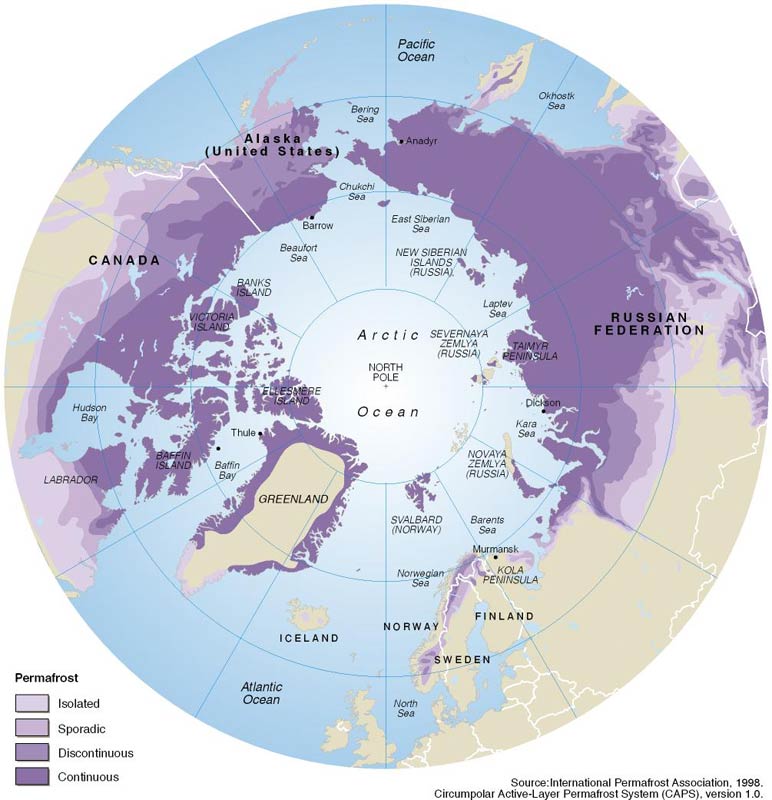When most people think of climate change, carbon dioxide emissions (mostly related to anthropogenic sources) are usually the main component of discussion. Methane, on the other hand – while recognized as a greenhouse gas contributor – tends to take a back-seat.
Indeed, even though CO2 remains in the atmosphere longer and steals the media spotlight, methane is actually a more effective greenhouse gas (it prevents more energy from leaving the atmosphere), and still accounted for 10% of US greenhouse gas emissions in 2010.
Enter the Earth’s northern hemisphere
Areas of permanently frozen soil – known as permafrost – are beginning to warm up and thaw, as a result of rising global temperatures; this is taking place throughout the arctic regions, from Alaska to Siberia (though some permafrost is found in the southern hemisphere as well).
The issue at hand here, which is beginning to raise alarm throughout scientific circles, is that permafrost houses one of the richest stores of methane on the planet, and if completely thawed, would release 1700 billion tonnes of carbon into the atmosphere: a cause for concern.

A pertinent question concerns how much of that carbon comes from methane, and how much from carbon dioxide (permafrost contains both in differing quantities).
While recent investigation has indicated little, if any, methane has actually been released so far, projected global temperature rise suggests methane release may be a significant tipping point in shaping the Earth’s future climate.






